RBS 2012 Annual Report Download - page 399
Download and view the complete annual report
Please find page 399 of the 2012 RBS annual report below. You can navigate through the pages in the report by either clicking on the pages listed below, or by using the keyword search tool below to find specific information within the annual report.-
 1
1 -
 2
2 -
 3
3 -
 4
4 -
 5
5 -
 6
6 -
 7
7 -
 8
8 -
 9
9 -
 10
10 -
 11
11 -
 12
12 -
 13
13 -
 14
14 -
 15
15 -
 16
16 -
 17
17 -
 18
18 -
 19
19 -
 20
20 -
 21
21 -
 22
22 -
 23
23 -
 24
24 -
 25
25 -
 26
26 -
 27
27 -
 28
28 -
 29
29 -
 30
30 -
 31
31 -
 32
32 -
 33
33 -
 34
34 -
 35
35 -
 36
36 -
 37
37 -
 38
38 -
 39
39 -
 40
40 -
 41
41 -
 42
42 -
 43
43 -
 44
44 -
 45
45 -
 46
46 -
 47
47 -
 48
48 -
 49
49 -
 50
50 -
 51
51 -
 52
52 -
 53
53 -
 54
54 -
 55
55 -
 56
56 -
 57
57 -
 58
58 -
 59
59 -
 60
60 -
 61
61 -
 62
62 -
 63
63 -
 64
64 -
 65
65 -
 66
66 -
 67
67 -
 68
68 -
 69
69 -
 70
70 -
 71
71 -
 72
72 -
 73
73 -
 74
74 -
 75
75 -
 76
76 -
 77
77 -
 78
78 -
 79
79 -
 80
80 -
 81
81 -
 82
82 -
 83
83 -
 84
84 -
 85
85 -
 86
86 -
 87
87 -
 88
88 -
 89
89 -
 90
90 -
 91
91 -
 92
92 -
 93
93 -
 94
94 -
 95
95 -
 96
96 -
 97
97 -
 98
98 -
 99
99 -
 100
100 -
 101
101 -
 102
102 -
 103
103 -
 104
104 -
 105
105 -
 106
106 -
 107
107 -
 108
108 -
 109
109 -
 110
110 -
 111
111 -
 112
112 -
 113
113 -
 114
114 -
 115
115 -
 116
116 -
 117
117 -
 118
118 -
 119
119 -
 120
120 -
 121
121 -
 122
122 -
 123
123 -
 124
124 -
 125
125 -
 126
126 -
 127
127 -
 128
128 -
 129
129 -
 130
130 -
 131
131 -
 132
132 -
 133
133 -
 134
134 -
 135
135 -
 136
136 -
 137
137 -
 138
138 -
 139
139 -
 140
140 -
 141
141 -
 142
142 -
 143
143 -
 144
144 -
 145
145 -
 146
146 -
 147
147 -
 148
148 -
 149
149 -
 150
150 -
 151
151 -
 152
152 -
 153
153 -
 154
154 -
 155
155 -
 156
156 -
 157
157 -
 158
158 -
 159
159 -
 160
160 -
 161
161 -
 162
162 -
 163
163 -
 164
164 -
 165
165 -
 166
166 -
 167
167 -
 168
168 -
 169
169 -
 170
170 -
 171
171 -
 172
172 -
 173
173 -
 174
174 -
 175
175 -
 176
176 -
 177
177 -
 178
178 -
 179
179 -
 180
180 -
 181
181 -
 182
182 -
 183
183 -
 184
184 -
 185
185 -
 186
186 -
 187
187 -
 188
188 -
 189
189 -
 190
190 -
 191
191 -
 192
192 -
 193
193 -
 194
194 -
 195
195 -
 196
196 -
 197
197 -
 198
198 -
 199
199 -
 200
200 -
 201
201 -
 202
202 -
 203
203 -
 204
204 -
 205
205 -
 206
206 -
 207
207 -
 208
208 -
 209
209 -
 210
210 -
 211
211 -
 212
212 -
 213
213 -
 214
214 -
 215
215 -
 216
216 -
 217
217 -
 218
218 -
 219
219 -
 220
220 -
 221
221 -
 222
222 -
 223
223 -
 224
224 -
 225
225 -
 226
226 -
 227
227 -
 228
228 -
 229
229 -
 230
230 -
 231
231 -
 232
232 -
 233
233 -
 234
234 -
 235
235 -
 236
236 -
 237
237 -
 238
238 -
 239
239 -
 240
240 -
 241
241 -
 242
242 -
 243
243 -
 244
244 -
 245
245 -
 246
246 -
 247
247 -
 248
248 -
 249
249 -
 250
250 -
 251
251 -
 252
252 -
 253
253 -
 254
254 -
 255
255 -
 256
256 -
 257
257 -
 258
258 -
 259
259 -
 260
260 -
 261
261 -
 262
262 -
 263
263 -
 264
264 -
 265
265 -
 266
266 -
 267
267 -
 268
268 -
 269
269 -
 270
270 -
 271
271 -
 272
272 -
 273
273 -
 274
274 -
 275
275 -
 276
276 -
 277
277 -
 278
278 -
 279
279 -
 280
280 -
 281
281 -
 282
282 -
 283
283 -
 284
284 -
 285
285 -
 286
286 -
 287
287 -
 288
288 -
 289
289 -
 290
290 -
 291
291 -
 292
292 -
 293
293 -
 294
294 -
 295
295 -
 296
296 -
 297
297 -
 298
298 -
 299
299 -
 300
300 -
 301
301 -
 302
302 -
 303
303 -
 304
304 -
 305
305 -
 306
306 -
 307
307 -
 308
308 -
 309
309 -
 310
310 -
 311
311 -
 312
312 -
 313
313 -
 314
314 -
 315
315 -
 316
316 -
 317
317 -
 318
318 -
 319
319 -
 320
320 -
 321
321 -
 322
322 -
 323
323 -
 324
324 -
 325
325 -
 326
326 -
 327
327 -
 328
328 -
 329
329 -
 330
330 -
 331
331 -
 332
332 -
 333
333 -
 334
334 -
 335
335 -
 336
336 -
 337
337 -
 338
338 -
 339
339 -
 340
340 -
 341
341 -
 342
342 -
 343
343 -
 344
344 -
 345
345 -
 346
346 -
 347
347 -
 348
348 -
 349
349 -
 350
350 -
 351
351 -
 352
352 -
 353
353 -
 354
354 -
 355
355 -
 356
356 -
 357
357 -
 358
358 -
 359
359 -
 360
360 -
 361
361 -
 362
362 -
 363
363 -
 364
364 -
 365
365 -
 366
366 -
 367
367 -
 368
368 -
 369
369 -
 370
370 -
 371
371 -
 372
372 -
 373
373 -
 374
374 -
 375
375 -
 376
376 -
 377
377 -
 378
378 -
 379
379 -
 380
380 -
 381
381 -
 382
382 -
 383
383 -
 384
384 -
 385
385 -
 386
386 -
 387
387 -
 388
388 -
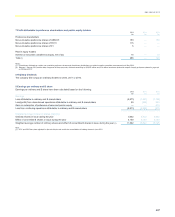 389
389 -
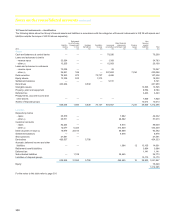 390
390 -
 391
391 -
 392
392 -
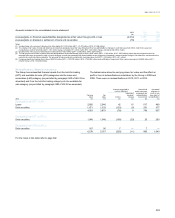 393
393 -
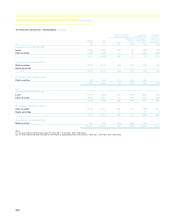 394
394 -
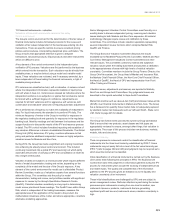 395
395 -
 396
396 -
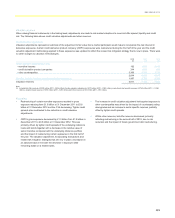 397
397 -
 398
398 -
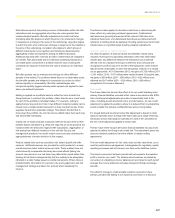 399
399 -
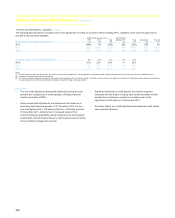 400
400 -
 401
401 -
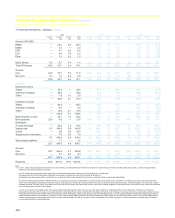 402
402 -
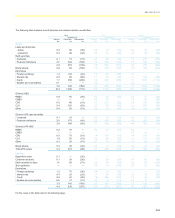 403
403 -
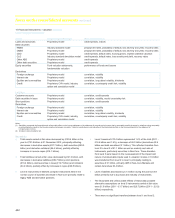 404
404 -
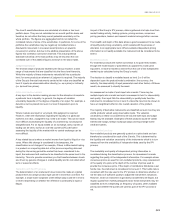 405
405 -
 406
406 -
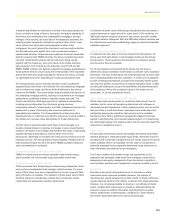 407
407 -
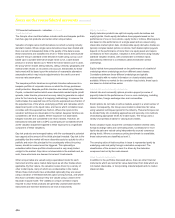 408
408 -
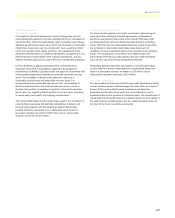 409
409 -
 410
410 -
 411
411 -
 412
412 -
 413
413 -
 414
414 -
 415
415 -
 416
416 -
 417
417 -
 418
418 -
 419
419 -
 420
420 -
 421
421 -
 422
422 -
 423
423 -
 424
424 -
 425
425 -
 426
426 -
 427
427 -
 428
428 -
 429
429 -
 430
430 -
 431
431 -
 432
432 -
 433
433 -
 434
434 -
 435
435 -
 436
436 -
 437
437 -
 438
438 -
 439
439 -
 440
440 -
 441
441 -
 442
442 -
 443
443 -
 444
444 -
 445
445 -
 446
446 -
 447
447 -
 448
448 -
 449
449 -
 450
450 -
 451
451 -
 452
452 -
 453
453 -
 454
454 -
 455
455 -
 456
456 -
 457
457 -
 458
458 -
 459
459 -
 460
460 -
 461
461 -
 462
462 -
 463
463 -
 464
464 -
 465
465 -
 466
466 -
 467
467 -
 468
468 -
 469
469 -
 470
470 -
 471
471 -
 472
472 -
 473
473 -
 474
474 -
 475
475 -
 476
476 -
 477
477 -
 478
478 -
 479
479 -
 480
480 -
 481
481 -
 482
482 -
 483
483 -
 484
484 -
 485
485 -
 486
486 -
 487
487 -
 488
488 -
 489
489 -
 490
490 -
 491
491 -
 492
492 -
 493
493 -
 494
494 -
 495
495 -
 496
496 -
 497
497 -
 498
498 -
 499
499 -
 500
500 -
 501
501 -
 502
502 -
 503
503 -
 504
504 -
 505
505 -
 506
506 -
 507
507 -
 508
508 -
 509
509 -
 510
510 -
 511
511 -
 512
512 -
 513
513 -
 514
514 -
 515
515 -
 516
516 -
 517
517 -
 518
518 -
 519
519 -
 520
520 -
 521
521 -
 522
522 -
 523
523 -
 524
524 -
 525
525 -
 526
526 -
 527
527 -
 528
528 -
 529
529 -
 530
530 -
 531
531 -
 532
532 -
 533
533 -
 534
534 -
 535
535 -
 536
536 -
 537
537 -
 538
538 -
 539
539 -
 540
540 -
 541
541 -
 542
542 -
 543
543
 |
 |

RBS GROUP 2012
397
Risk data are used as the primary sources of information within bid-offer
calculations and are aggregated when they are more granular than
market standard buckets. Bid-offer adjustments for each risk factor
(including delta (the degree to which the price of an instrument changes
in response to a change in the price of the underlying), vega (the degree
to which the price of an instrument changes in response to the volatility in
the price of the underlying), correlation (the degree to which prices of
different instruments move together) and others) are determined by
aggregating similar risk exposures arising on different products.
Additional basis bid-offer reserves are taken where these are charged in
the market. Risk associated with non-identical underlying exposures is
not netted down unless there is evidence that the cost of closing the
combined risk exposure is less than the cost of closing on an individual
basis.
Bid-offer spreads vary by maturity and risk type to reflect different
spreads in the market. For positions where there is no observable quote,
the bid-offer spreads are widened in comparison to proxies to reflect
reduced liquidity or observability. Bid-offer methodologies also
incorporate liquidity triggers whereby wider spreads are applied to risks
above pre-defined thresholds.
Netting is applied on a portfolio basis to reflect the level at which the
Group believes it could exit the portfolio, rather than the sum of exit costs
for each of the portfolio’s individual trades. For example, netting is
applied where long and short risk in two different maturity buckets can be
closed out in a single market transaction at less cost than by way of two
separate transactions (calendar netting). This reflects the fact that to
close down the portfolio, the net risk can be settled rather than each long
and short trade individually.
Vanilla risk on exotic products is typically reserved as part of the overall
portfolio based calculation e.g. delta and vega risk on exotic products are
included within the delta and vega bid-offer calculations. Aggregation of
risk arising from different models is in line with the Group's risk
management practices; the model review control process considers the
appropriateness of model selection in this respect.
Product related risks such as correlation risk, attract specific bid-offer
reserves. Additional reserves are provided for exotic products to ensure
overall reserves match market close-out costs. These market close-out
costs inherently incorporate risk decay and cross-effects (taking into
account how moves in one risk factor may affect other inputs rather than
treating all risk factors independently) that are unlikely to be adequately
reflected in a static hedge based on vanilla instruments. Where there is
limited bid-offer information for a product, the pricing approach and risk
management strategy are taken into account when assessing the
reserve.
The discount rates applied to derivative cash-flows in determining fair
value reflect any underlying collateral agreements. Collateralised
derivatives are generally discounted at the relevant OIS rates at an
individual trade level. Uncollateralised derivatives are discounted with
reference to funding levels by applying a funding spread over benchmark
interest rates on a portfolio basis (funding valuation adjustment).
Amounts deferred on initial recognition
On initial recognition of financial assets and liabilities valued using
valuation techniques incorporating information other than observable
market data, any difference between the transaction price and that
derived from the valuation technique is deferred. Such amounts are
recognised in profit or loss over the life of the transaction; when market
data becomes observable; or when the transaction matures or is closed
out as appropriate. At 31 December 2012, net gains of £153 million (2011
- £161 million; 2010 - £167 million) were carried forward. During the year,
net gains of £39 million (2011 - £89 million; 2010 - £62 million) were
deferred and £47 million (2011 - £95 million; 2010 - £99 million)
recognised in the income statement.
Own credit
The Group takes into account the effect of its own credit standing when
valuing financial liabilities recorded at fair value in accordance with IFRS.
Own credit spread adjustments are made to issued debt held at fair
value, including issued structured notes, and derivatives. An own credit
adjustment is applied to positions where it is believed that counterparties
would consider the Group's creditworthiness when pricing trades.
For issued debt and structured notes this adjustment is based on debt
issuance spreads above average inter-bank rates (at a range of tenors).
Secondary senior debt issuance spreads are used in the calculation of
the own credit adjustment applied to senior debt.
The fair value of the Group's derivative financial liabilities has also been
adjusted to reflect the Group's own credit risk. The adjustment takes into
account collateral posted by it and the effects of master netting
agreements.
The own credit adjustment for fair value does not alter cash flows, is not
used for performance management, is disregarded for regulatory capital
reporting processes and will reverse over time as the liabilities mature.
The reserve movement between periods will not equate to the reported
profit or loss for own credit. The balance sheet reserves are stated by
conversion of underlying currency balances at spot rates for each period
whereas the income statement includes intra-period foreign exchange
sell-offs.
The effect of change in credit spreads could be reversed in future
periods, provided the liability is not repaid at a premium or a discount.
